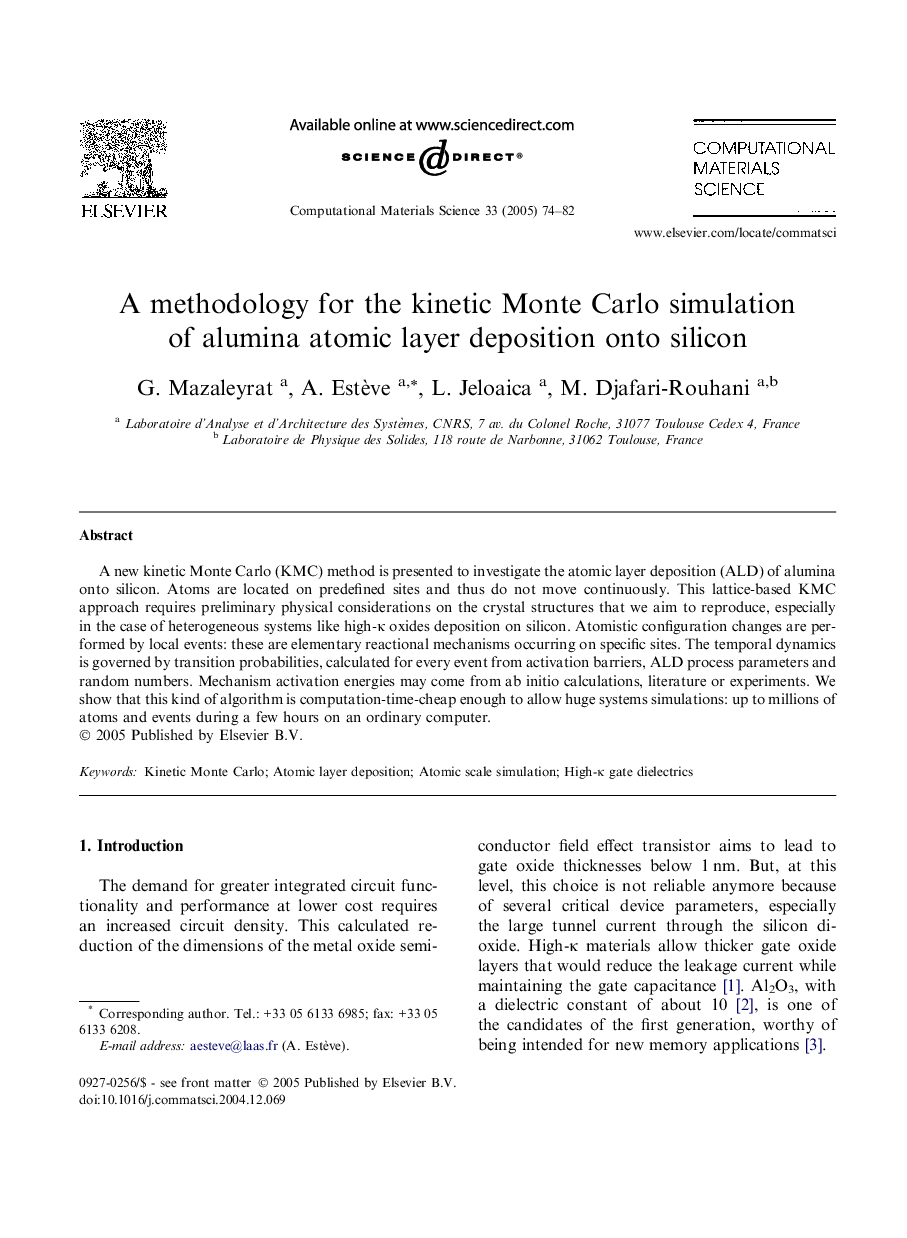| Article ID | Journal | Published Year | Pages | File Type |
|---|---|---|---|---|
| 9793037 | Computational Materials Science | 2005 | 9 Pages |
Abstract
A new kinetic Monte Carlo (KMC) method is presented to investigate the atomic layer deposition (ALD) of alumina onto silicon. Atoms are located on predefined sites and thus do not move continuously. This lattice-based KMC approach requires preliminary physical considerations on the crystal structures that we aim to reproduce, especially in the case of heterogeneous systems like high-κ oxides deposition on silicon. Atomistic configuration changes are performed by local events: these are elementary reactional mechanisms occurring on specific sites. The temporal dynamics is governed by transition probabilities, calculated for every event from activation barriers, ALD process parameters and random numbers. Mechanism activation energies may come from ab initio calculations, literature or experiments. We show that this kind of algorithm is computation-time-cheap enough to allow huge systems simulations: up to millions of atoms and events during a few hours on an ordinary computer.
Related Topics
Physical Sciences and Engineering
Engineering
Computational Mechanics
Authors
G. Mazaleyrat, A. Estève, L. Jeloaica, M. Djafari-Rouhani,
